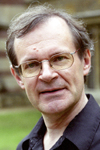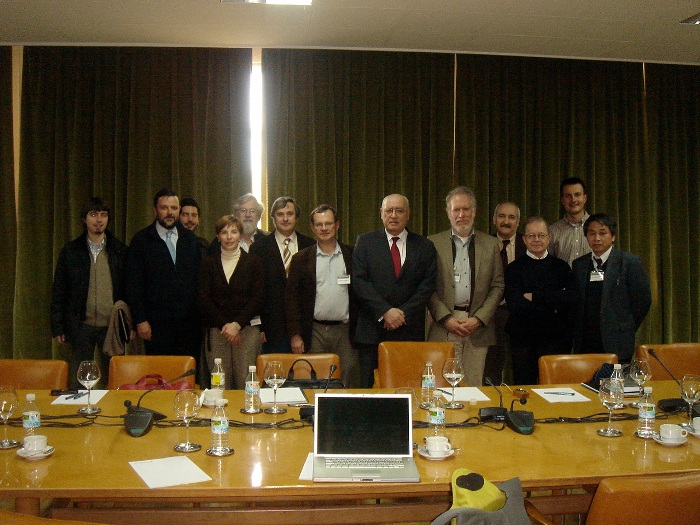Director's Corner
26 February 2009
Trains, planes and automobiles – the life of a regional director
Today's issue features a Director's Corner from Brian Foster, GDE European Regional Director.
Although 2009 is not yet two months old, I seem to have already fitted in enough trips to fill a year – but such is the life of an ILC Director. My first trip of the year was to Paris. On 6 January I travelled to the headquarters of the Institut National de Physique Nucléaire et de Physique des Particules – more concisely known as CNRS/IN2P3 – to meet with the Director, Michel Spiro, the Deputy Director for particle physics, Etienne Augé and Guy Wormser, Director of LAL, Orsay. Our discussions were wide-ranging, centering on the prospects for the ILC in France as well as developments on the wider stage. In France itself, the advent of a new, energetic and relatively young President brings with it a tendency to review all organs of government policy; the delivery and administration of scientific research is no exception. Even during a time when far-reaching reforms are being considered, the normal policy and decision-making functions of IN2P3 continue. We discussed many of these over an excellent lunch in a delightful little restaurant near CNRS headquarters near the Bois du Boulogne. The strong involvement of France in the European X-Ray Laser Project XFEL project is giving rise to many synergies with ILC work, which are being exploited within the strong French involvement inside the European Union Framework 7 Project, ILC-HiGrade.
The second trip of the year was to Madrid, the first stop on a tour not only to attend the FALC meeting but also subsequently to meet with the Spanish particle physics community to discuss their growing ILC involvement. Barry Barish has discussed both the FALC meeting and our discussions with the Spanish particle physics community in previous Director's Corners (read 12 February's corner and 5 February's), so let me simply reiterate the very positive impression we gained of the quality and enthusiasm of the work being done in Spain. There is substantial and growing activity in many areas of accelerator physics, including the construction of a new synchrotron radiation facility near Barcelona. Barry had to return to Caltech before the visit to Ciemat by Marc Ross, Akhira Yamamoto and myself. We were most warmly received by the Director, Juan_Antonio Rubbio as well as my old friend Manuel Aguilar, with whom I worked on the experiment at CERN that was the subject of my PhD thesis. After a most interesting tour d'horizon from Professor Rubbio we spent a great deal of time discussing the CIEMAT (Centro de Investigaciones Energéticas, Medioambientales y Tecnológicas) contribution to superconducting technology for the ILC. We agreed both on the importance of properly involving Spain in the developing technology strategy and that there should be a strong CIEMAT delegation to the TILC09 meeting in Tskuba.
Our next port of call was Frascati, where we drove after flying to Rome from Madrid. I know of few more impressive views in the world that that from our hotel on the hillside above Frascati over the plain towards Rome, where it is just possible to make out with the naked eye the sun glistening on the dome of St Peter's. Refreshed by the peace of our hillside retreat, and joined by Nick Walker, the full Project Management contingent and I spent the next day and a half in INFN Frascati, hosted by Mario Calvetti and Susanna Guiducci. Our discussions mostly concentrated on damping ring R&D, where Frascati are playing a leading role, and superconducting RF, where the great expertise of the Milano group led by Carlo Pagani is vital to the ILC. Carlo joined us for the first day. We were also very pleased to be able to discuss the ILC and Italy's contributions with Roberto Petronzio, the President of INFN.
My final trip of this hectic period was to CERN last week, where I gave a talk at the "From the LHC to a Future Collider" conference. My talk, on technology development for the ILC machine, was a companion to one by Klaus Desch on the Physics of the ILC. There was some lively questioning after both talks. Even though CERN is naturally preoccupied with the LHC repairs and ensuring a smooth start-up in the autumn, it was very gratifying to see CERN engaging fully in discussions on the next major project beyond LHC. I had a most useful meeting with the new Director General in the afternoon, in which we were able to explore a variety of interesting areas in the developing ideas for governance of the ILC.
I haven't mentioned the other "big" players in ILC Europe – Germany and UK. Obviously I am in continuous discussion inside the UK on the ILC. It appears as if another difficult situation is developing there as the three-year "rolling grants" which support all experimental activity are coming up for review. It seems likely that major cuts are being planned by STFC (Science and Technology Facilities Council) as part of its ongoing cutback in grants. Germany, and DESY in particular, is very preoccupied with the start of construction activity for the European XFEL. I hope to visit Bonn shortly, on the invitation of Beatrix Vierkorn-Rudolph extended at FALC.
As I conclude this overview, I note a disappointing contrast between Europe and the US in these times of economic recession. So far I see little sign of a significant injection of funds into scientific research, in contrast to the provisions of President Obama's American Recovery & Reinvestment Act. Let's hope that Europe will follow the US's lead. The Chair of FALC remarked in Madrid that governments were looking for major capital projects to keep the economy moving. We are doing our best to move the ILC into this category.
-- Brian Foster


